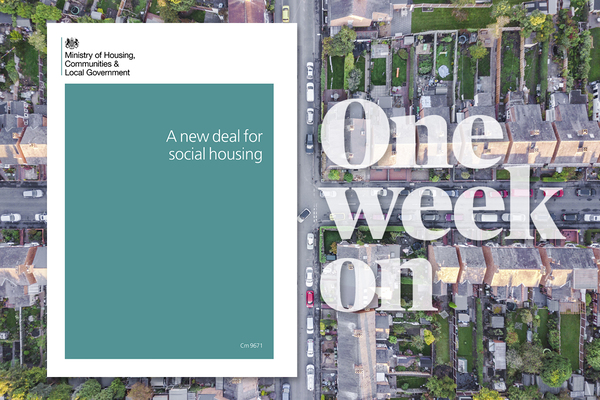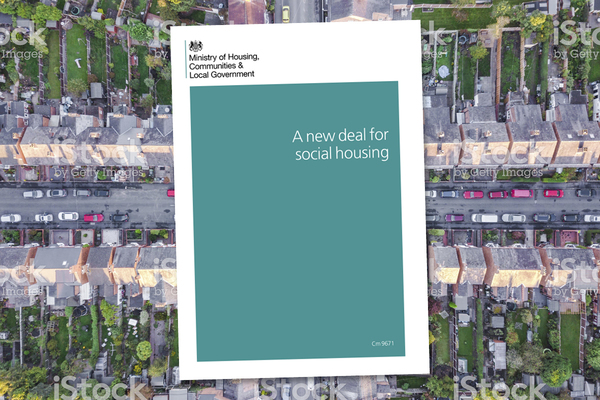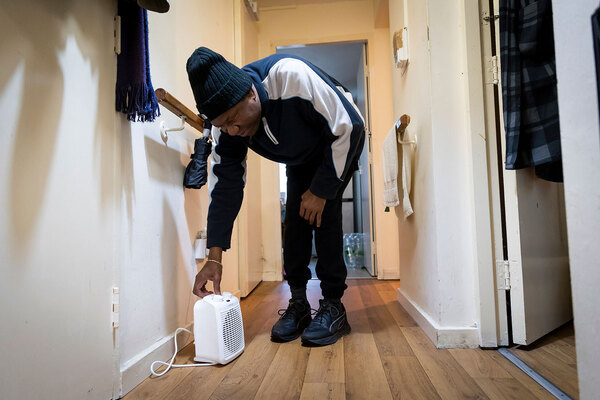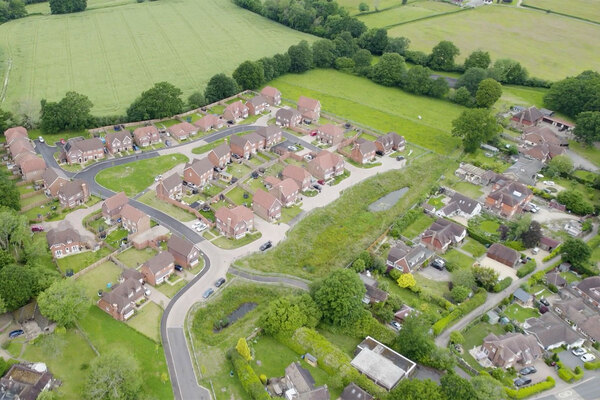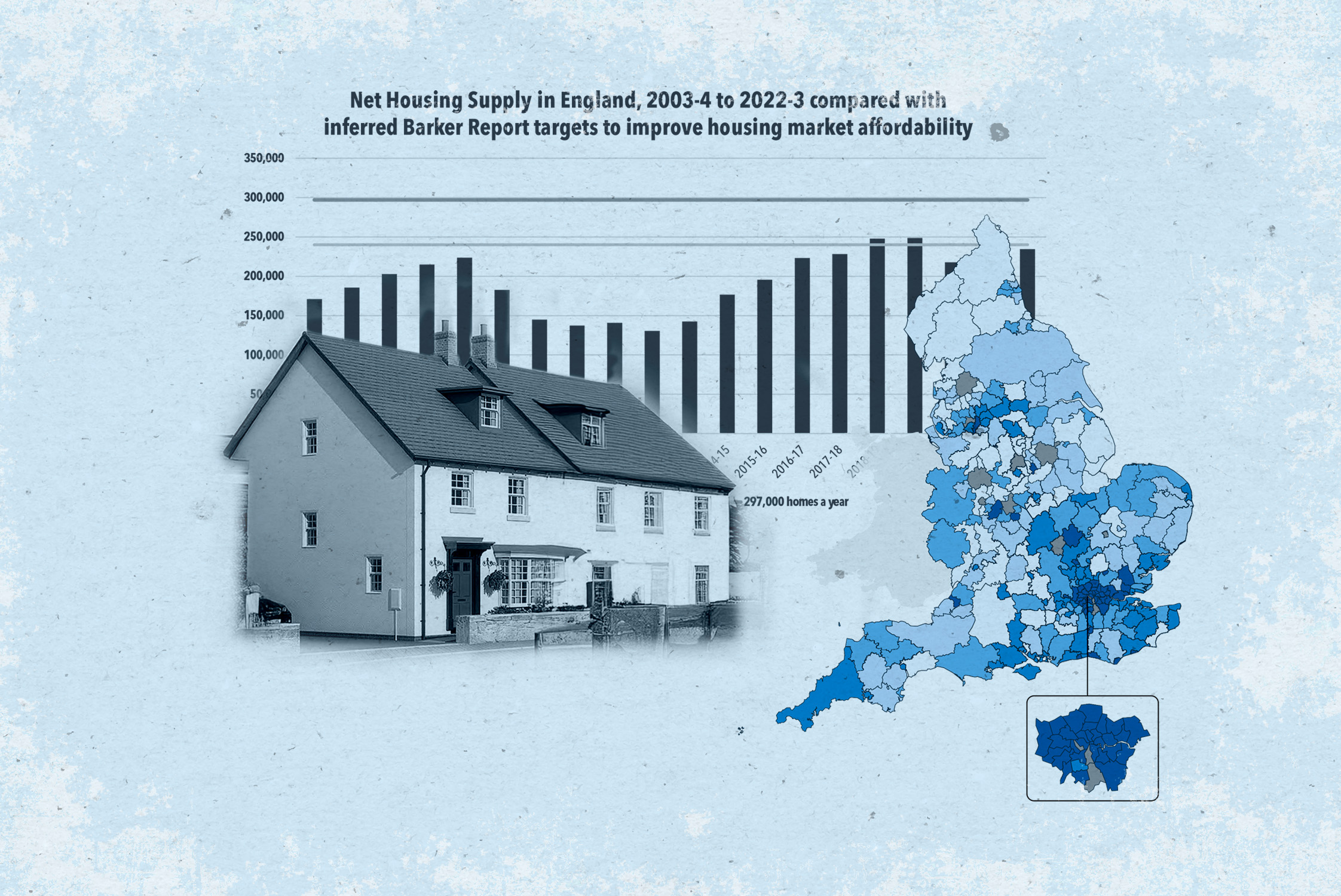You are viewing 1 of your 1 free articles
 Lucy Grimwood
Lucy GrimwoodLucy specialises in social housing finance and general lending. Acting for both borrowers and funders, her clients include housing ...more
Social Housing Green Paper – my four key questions
As the dust settles on the publication of the green paper last month, four major questions stand out, writes Lucy Grimwood
The prime minister tells us in the Social Housing Green Paper that a “major reform of social housing is needed”.
The green paper sets out the government’s proposals for such reform and launches a consultation process.
Its emphasis on the importance of social housing has been welcomed, but questions clearly remain.
1.How and when will the regulatory framework be updated?
It does not appear to be a case of whether the regulatory framework will be updated, but how and when.
The green paper seeks a full review of the regulatory framework, focusing on the regulator’s enforcement of the consumer standards, currently limited to instances of “serious detriment” to tenants.
The government suggests lowering this threshold, to more closely align with the regulator’s enforcement of the economic standards.
“How will it be ensured that any updates to the regulatory framework are ones that will work... for the regulator, the regulated, the funders and the residents themselves?”
More generally, the government asks whether the current “co-regulatory” approach is right for social housing, and suggests giving the regulator power to take a “more rigorous and proactive approach to enforcement”.
How will it be ensured that any updates to the regulatory framework are ones that will work – in practice – for the regulator, the regulated, the funders and the residents themselves? The balance will be tricky.
The green paper admits the challenge in giving residents greater choice and control over services, while recognising the need for registered providers to retain control of quality, safety and value for money.
2. League tables: how will ‘key performance indicators’ be measured and enforced?
The green paper suggests introducing key performance indicators for registered providers, covering repairs, building safety, complaints handling, resident engagement and neighbourhood management. The results would be publicly available in league tables.
Greater transparency, together with stronger sanctions for bad landlords, is welcome. However, the practical application of this proposal raises many questions: most significantly, how will such key performance indicators be measured and standardised?
While most providers already produce information on the measurements proposed, a standardised approach would be crucial for any comparative league table to be meaningful and fair – particularly given the possible consequences of a lower-than-expected league table position, such as regulatory downgrade and/or bid failure.
Equally, the practical outcome for residents of access to such information will need to be clarified, as will the extent to which league tables would become important for sector funders.
3. How will the Voluntary Right to Buy be funded and implemented?
Registered providers must be able to replace properties sold under the Voluntary Right to Buy (VRTB) by being refunded the discount – this was a cornerstone of the National Housing Federation’s VRTB offer.
However, while the green paper notes the importance of enabling providers “to replace the homes sold”, it also abandons the originally proposed mechanism to fund such discounts (whereby local authorities would have been required to sell their vacant higher-value properties). With no replacement funding mechanism proposed, VRTB’s future remains in doubt.
Similarly, the green paper launches a review of how Right to Buy receipts are used. It suggests replacing the ‘one-for-one’ replacement of each home sold – another VRTB cornerstone – with “a broader measurement”.
The review focuses on the statutory Right to Buy and so will primarily affect local authorities. It is not clear whether its outcomes would apply to the VRTB, and this needs to be clarified.
4. How will shared ownership products, and their fundability, be affected?
The green paper also focuses on promoting homeownership.
Shared ownership is clearly favoured: the government asks how it can “best support providers to develop new shared ownership products that enable people to build up more equity [‘staircase’] in their homes”.
The paper then references shared ownership products that permit tenants to staircase at 1% a year following initial acquisition – far lower than the typical 10%.
This is an interesting proposal, which some providers already offer, but expanding its application would need to be carefully considered, with appropriate advice and support provided for tenants.
How such products would work in secured funding also requires consideration – if staircasings are far smaller and more frequent, then the corresponding security provisions may need to be adjusted.
Lucy Grimwood, associate, Winckworth Sherwood
Social Housing Green Paper: full coverage
All our Social Housing Green Paper coverage in one place:
Green paper measures are not enough to create May’s ‘new generation’ of council homes Green paper proposals are welcome but much more is needed to support councils to build, writes John Bibby
Green paper shows ministers now see associations as trusted partners Focusing on the failure of the green paper to address supply misses the point, writes Boris Worrall
Government should focus on building on what is already strong Philippa Jones considers the Social Housing Green Paper through a slightly different lens
We need more than a week of delayed announcements bundled together Jules Birch reflects on the government’s ‘Housing Week’ announcements
The regulator should monitor how associations assist homeless people Government announcements this week are positive, but any enhanced role for the English regulator should include looking at homelessness prevention work, argues David Bogle
The regulator’s role should be limited to dealing with systemic failures Julian Ashby suggests the Housing Ombudsman Service should deal with all complaints
The green paper shows ministers are in listening mode Despite some glaring omissions, the government appears to be in listening mode and it is important the sector takes advantage, argues Emma Maier
A short history of social housing league tables Attempts to create league tables for housing associations are nothing new. Mervyn Jones looks at how they have worked in the past
League tables could prove blunt and counter-productive, sector warns Housing figures criticise government proposals to measure social landlords against performance indicators
Government ‘must decide how proactive regulator should be’ on consumer standards Ministers now face a dilemma over the regulator’s focus, sector figures say
The Green Paper: a golden opportunity missed? Melanie Rees assesses the Social Housing Green Paper against recommendations drawn up by the Chartered Institute of Housing and finds the government comes up short
Longer strategic partnerships and guranteed debt to boost social housebuilding The Social Housing Green Paper outlines key ways of boosting supply
The green paper is remarkable progress but it is still not enough The green paper suggests the government appears to be re-writing much of its policy since 2010, but more needs to be done, writes Jules Birch
Green paper marks a ‘milestone’ on resident involvement The government’s recognition residents need clear information is to be welcomed, now it up to the sector to embrace tenant involvement, writes Paul Hackett
Ministers consider stock transfer programme to community-led associations The stock transfer programme could be revived under proposals in the housing green paper
Access to housing grant could be tied to new league tables Grant could be awarded according to how well landlords meet performance indicators, the paper suggests
Ofsted-style regulation of tenant services proposed The government is considering expanding the Regulator for Social Housing’s remit to intervene over tenant services and give it a more “proactive approach to enforcement”
Government proposes dropping one-for-one Right to Buy replacement commitment A consultation paper published alongside the green paper proposes a broader measurement to replace the one-for-one pledge
A list of recent housing policy U-turns The green paper confirms yet more housing policy U-turns from the government, which has spent the past two years dropping policy ideas developed under the David Cameron government. Here is a rundown of the major changes in policy direction
Sector welcomes green paper but calls for more ‘ambitious investment’ Reaction to the proposals, from the National Housing Federation, Chartered Institute of Housing and more
Morning Briefing: reaction to green paper announcements how the media reported the proposals trailed by the government overnight
Government drops plans to force councils to sell higher-value stock The government drops plans to force councils to sell higher value homes
League tables and ‘sharper teeth’ for regulator in social housing green paper Ministers reveal some of the things in the paper ahead of its publication
Grenfell survivors: green paper does not go far enough survivors of the Grenfell Tower fire have said the measures published in the Social Housing Green Paper do not do enough to rectify issues in the social housing sector
KEY PROPOSALS IN THE SOCIAL HOUSING GREEN PAPER
- New 'league tables' of housing providers based on key performance indicators, surrounding services such as repairs and neighbourhood management. This could be linked to housing grant.
- Consideration to scrapping of the current 'serious detriment' test, to allow 'Ofsted-style' tougher consumer regulation
- New home ownership options such as allowing tenants to buy as little as 1% of their property each year through shared ownership. This would only apply to new shared ownership purchases.
- Ditching of plans to force social landlords to offer fixed term tenancies rather than lifetime tenancies in social housing
- Ditching of plans to force councils to sell off their most valuable social housing when it becomes vacant
- The potential introduction a new stock transfer programme from councils to 'community-led' housing associations
- The return of guaranteed debt funding to help the development of affordable homes, and longer term 'strategic partnerships' for developing housing associations




